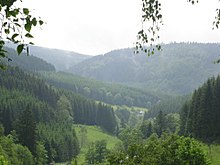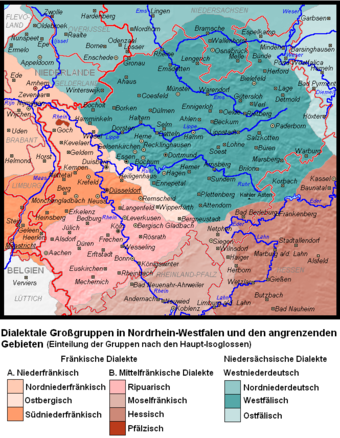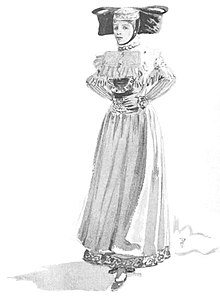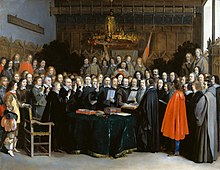Westphalia
| |||||||||||||||||||||||||||||||||||||||||||||||||||||||||||||||||||||||||||||
Read other articles:

Harry Tjan Silalahi (lahir Tjan Tjoen Hok) lahir 11 Februari 1934) adalah seorang tokoh politik, tokoh awam Katolik Ia dilahirkan sebagai anak kedua dari sepuluh bersaudara dalam sebuah keluarga yang sangat sederhana. Ayahnya buta huruf, dan ibunya penjual makanan kecil dan gudeg. Kedua orangtuanya hanya berharap Harry bisa menjadi orang yang berpendidikan. Aktif berorganisasi Di sekolah Harry menyenangi pelajaran sejarah, kesenian dan ilmu kemasyarakatan. Semasa di SMA, ia sudah mulai aktif ber…

У этого термина существуют и другие значения, см. Кайрат. Кайрат Полноеназвание Футбольный клуб «Кайрат» Прозвище Жёлто-чёрные[1] Основан 1954; 70 лет назад (1954) Стадион «Центральный» Вместимость 23 804 Владелец Кайрат Боранбаев[2][3][4] Ген. директор …

Woodworking tool A bullnose shoulder plane. In this model the mouth is adjusted by adding or removing shims behind the removable nose. The shoulder plane (also bullnose plane) is a plane tool with a blade flush with the edges of the plane, allowing trimming right up to the edge of a workpiece. Like a rebate plane, the shoulder plane's blade extends, therefore cuts, to the full width of the tool. The shoulder plane is used to trim the shoulders and faces of tenons. It is used when it is necessary…

Aca Aca Nehi NehiGenre Drama Komedi SkenarioHilman HariwijayaCeritaHilman HariwijayaSutradaraIndrayanto KurniawanPemeran Edy Oglek Nova Soraya Mieke Wijaya El Manik Vera Detty Penggubah lagu temaDadidoLagu pembukaAca Aca Nehi Nehi oleh DadidoLagu penutupAca Aca Nehi Nehi oleh DadidoPenata musikStevenNegara asalIndonesiaBahasa asliBahasa IndonesiaJmlh. musim1Jmlh. episode8ProduksiProduserLeo SutantoSinematografiGatot Avia NugrohoPenyunting Ramdhan Panigoro Fredy Simonis Mustadi Pengaturan k…

この項目には、一部のコンピュータや閲覧ソフトで表示できない文字が含まれています(詳細)。 数字の大字(だいじ)は、漢数字の一種。通常用いる単純な字形の漢数字(小字)の代わりに同じ音の別の漢字を用いるものである。 概要 壱万円日本銀行券(「壱」が大字) 弐千円日本銀行券(「弐」が大字) 漢数字には「一」「二」「三」と続く小字と、「壱」「弐」…

مكتب رئيس الوزراء الإسرائيلي (بالعبرية: משרד ראש הממשלה)[1] تفاصيل الوكالة الحكومية البلد إسرائيل تأسست 1948 الإدارة موقع الويب الموقع الرسمي، والموقع الرسمي تعديل مصدري - تعديل مكتب رئيس وزراء إسرائيل (بالعبرية: מִשְׂרָד רֹאשׁ הַמֶּמְשָׁלָה) …

Bilateral relationsSamoa-Turkey relations Samoa Turkey Samoa–Turkey relations are foreign relations between Samoa and Turkey. The Turkish ambassador in Wellington, New Zealand is accredited to Samoa since April 12, 1979.[1] Diplomatic Relations Turkey and Samoa have friendly relations. Through TIKA, Turkey[1] cooperates[2] with the European Investment Bank and JICA on the development of school buildings,[3] district hospitals[4] and reductions of the fin…

2005 CONCACAF U-20 QualificationTournament detailsHost countriesUnited StatesHondurasDatesJanuary 12–30Teams8 (from 1 confederation)Venue(s)2 (in 2 host cities)Tournament statisticsMatches played12Goals scored34 (2.83 per match)Attendance52,552 (4,379 per match)Top scorer(s) Ryan Gyaki (4 goals)← 2003 2007 → All statistics correct as of March 26, 2009.International football competition The 2005 CONCACAF U-20 Qualifying Tournament was held to determine the f…

Religious phrase in SikhismNot to be confused with Eckankar, the American new religious movement. Ik Onkār,[1] a Sikh symbol (encoded as a single character in Unicode at U+0A74, ੴ)Part of a series on theGuru Granth Sahibਗੁਰੂ ਗ੍ਰੰਥ ਸਾਹਿਬ Popular compositions Ik Onkar Mul Mantar Japji Sahib Anand Sahib Sukhmani Sahib Asa di Var Other compositions Salok Mardana Bhattan De Savaiye Ragamala Sidh Gosti Dakhni Oankar Ramkali Sadu Salok Sahaskriti Mahalla Pehla Gat…

I Think UAlbum mini karya Super JuniorDirilis29 Januari 2020 (2020-01-29)Direkam2019StudioSM Studios, Seoul, Korea SelatanGenreJ-popDurasi17:30BahasaJepangLabelAvex TraxLabel SJKronologi Super Junior Time Slip(2019) I Think U(2020) Star(2021) Singel dalam album I Think U I Think I -Japanese Version-Dirilis: 30 Oktober 2019 I Think U adalah album mini kedua yang dirilis oleh grup vokal pria asal Korea Selatan Super Junior pada tanggal 29 Januari 2020 dibawah Avex Trax di Jepang.[1 …
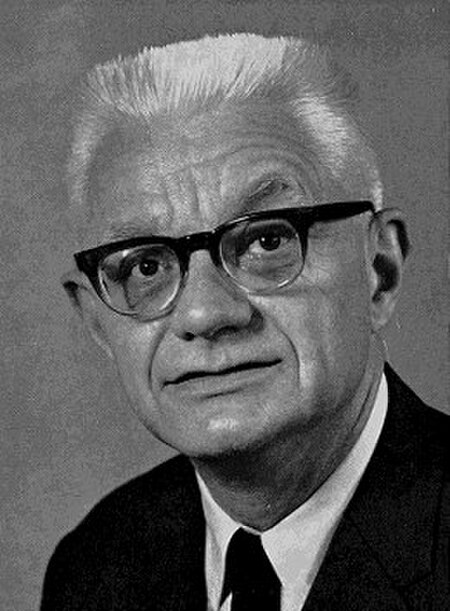
Carl Gustav HempelLahir(1905-01-08)8 Januari 1905Oranienburg, JermanMeninggal9 November 1997(1997-11-09) (umur 92)Princeton, New Jersey, Amerika SerikatAlmamaterUniversitas GöttingenUniversitas BerlinUniversitas HeidelbergEraFilsafat abad ke-20KawasanFilsafat BaratAliranFilsafat analitisMinat utamaFilsafat ilmuLogikaGagasan pentingModel deduktif-nomologisModel inductif-statistisPrinsip internal vs. jembatan[1]Dilema HempelParadoks gagakEksplanandum dan eksplanan Dipengaru…
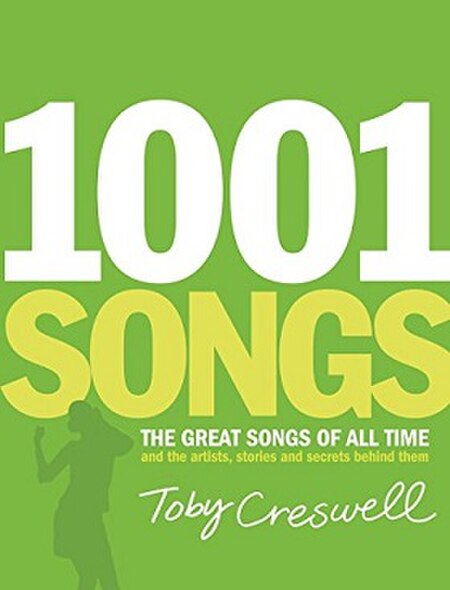
1001 Songs: The Great Songs of All Time and the Artists, Stories and Secrets Behind Them First editionAuthorToby CreswellCountryAustraliaLanguageEnglishSubjectPopular musicPublished 2005 (Hardie Grant Books) 2006 (Thunder's Mouth Press) Media typePrintPages880[1]ISBN978-1-74066-458-5OCLC182730209Dewey Decimal781.64 1001 Songs: The Great Songs of All Time and the Artists, Stories and Secrets Behind Them[2][3][4] is a compendium of notable popular recordings co…

American musician (born 1998) This article is about the 21st-century musician. For other people named Steve Lacy, see Steve Lacy (disambiguation). Steve LacyLacy in 2022Background informationBirth nameSteve Thomas Lacy-MoyaBorn (1998-05-23) May 23, 1998 (age 26)Compton, California, U.S.GenresAlternative R&Bneo soulfunkjazzindie rocklo-fipsychedelic soul[1]OccupationsMusicianguitaristsingersongwriterrecord producerInstrumentsVocalsguitarDiscographySteve Lacy discographyYears acti…

River in Washington, United StatesTieton RiverNorth Fork Tieton River, Shanwappum (Yakama), Tai-Tin (Cowlitz)[1]Mouth of the Tieton River in WashingtonLocationCountryUnited StatesStateWashingtonRegionYakima CountyPhysical characteristicsSourceNorth Fork Tieton River • locationCascade Range, McCall Glacier, Goat Rocks Wilderness • coordinates46°30′27″N 121°26′11″W / 46.50750°N 121.43639°W / 46.50750; -121.43639[3…

Election in Washington Main article: 1948 United States presidential election 1948 United States presidential election in Washington (state) ← 1944 November 2, 1948[1] 1952 → All 8 Washington votes to the Electoral College Nominee Harry S. Truman Thomas Dewey Party Democratic Republican Home state Missouri New York Running mate Alben W. Barkley Earl Warren Electoral vote 8 0 Popular vote 475,165 386,314 Percentage 52.56% 42.73% County Resu…

River in Perlis, Malaysia Perlis RiverNative nameSungai Perlis (Malay)LocationCountryMalaysiaStatePerlisPhysical characteristicsLength11.8 km (7.3 mi)Basin size310 km2 (120 sq mi) The Perlis River (Malay: Sungai Perlis) is a river in Perlis, Malaysia.[1] Geography The river's 11.8 km length makes it the fourth-longest river in the Perlis state.[2] History Under the 11th Malaysia Plan, 11 km of the river will be developed and beautified…

Amusement ride This article is about a type of amusement ride. For the original example, first erected in Chicago in 1893, see Ferris Wheel (1893). For other uses, see Ferris wheel (disambiguation). Giant wheel redirects here. For other uses, see Giant Wheel (disambiguation). The Singapore Flyer, a Ferris wheel in Singapore A Ferris wheel (also called a Giant Wheel or an observation wheel) is an amusement ride consisting of a rotating upright wheel with multiple passenger-carrying components (co…

German politician (1914–1991) Ewald BucherBucher in 1964Member of the BundestagIn office6 October 1953 – 19 October 1969 Personal detailsBorn(1914-07-19)19 July 1914Rottenburg am NeckarDied31 October 1991(1991-10-31) (aged 77)MutlangenNationalityGermanPolitical partyFDP Ewald Bucher (19 July 1914 in Rottenburg am Neckar, Kingdom of Württemberg – 31 October 1991 in Mutlangen[1]) was a German politician of the FDP.[2] He received a Juris Doctor from the Univers…

strage di Piazzale LoretostragePiazzale Loreto, 10 agosto 1944 Tipofucilazione Data10 agosto 194405:45 LuogoPiazzale Loreto, Milano Stato Italia Coordinate45°29′09.01″N 9°12′58.29″E45°29′09.01″N, 9°12′58.29″E ResponsabiliTheodor Saevecke, comandante della sicurezza nazista a Milano Legione Autonoma Mobile Ettore Muti (esecutori materiali) Motivazioneeccidio, immotivata rappresaglia per l'attentato in viale Abruzzi, data l'assenza di vittime fra i militari. ConseguenzeMor…

المؤسسة اللبنانية للإرسال شعار المؤسسة من 2013-حتى الآن معلومات عامة النوع متنوعة الشعار التجاري « القصة كلها » المدير بيار الضاهر تاريخ التأسيس 23 أغسطس 1985 البلد لبنان اللغة العربية المقر الرسمي بيروت الموقع الرسمي الموقع الرسمي (العربية) صفحة في�…










